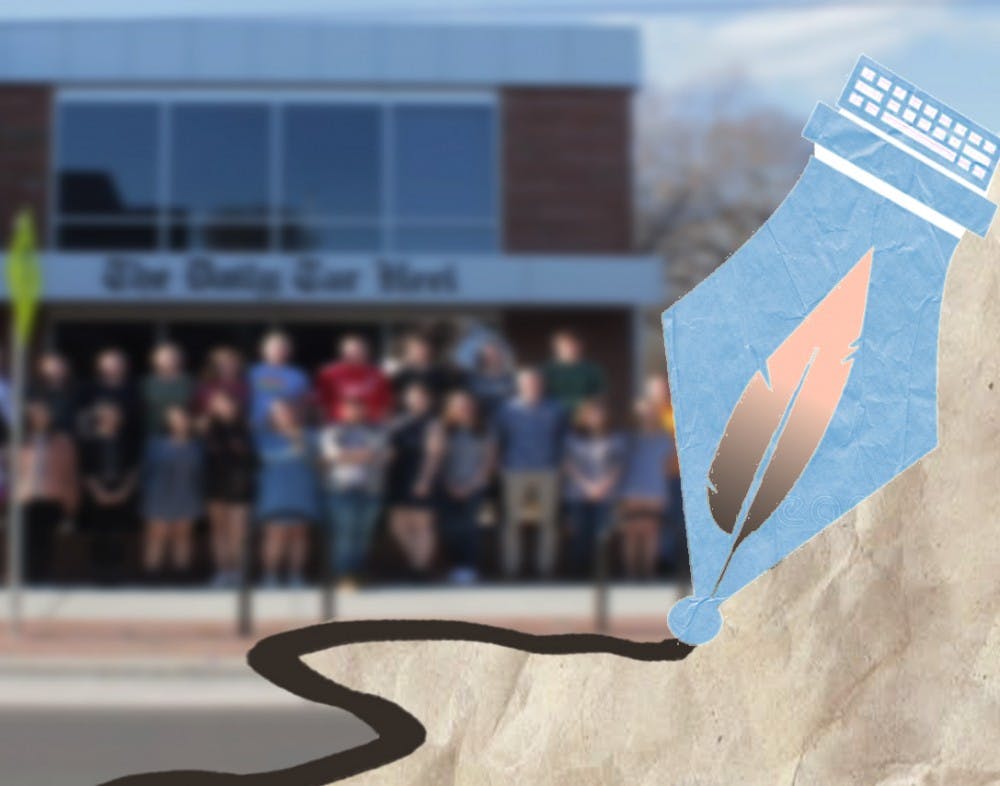“It’s profoundly disappointing that it’s been so long since another minority of any kind led the paper,” Nelson said. “I never would’ve imagined, 18 years ago, that there wouldn’t be someone else who looked like me who got to that job.”
***
According to a 2017 study by the American Society of News Editors, all minority groups make up 16.55 percent percent of America’s professional journalists.
Since minorities are expected to comprise the majority of America’s population by mid-century, it’s a statistic that concerns many media experts.
Rick Edmonds, media business analyst for the Poynter Institute, a non-profit school for journalism in Florida, said newsrooms owe it to the communities they represent to reflect and report on a diverse range of perspectives.
“As a matter of equity, most people who look at the state of the media today would say … it’s just fairer and better to have a diverse group of voices, rather than a homogenous, monochromatic makeup,” Edmonds said.
By Edmonds’ analysis, The Daily Tar Heel is lacking in its representation of the University community.
The four top management positions — editor-in-chief, managing editor, online managing editor and director of enterprise — are all currently held by white students.
Of the paper’s management and editorial team, approximately 20 percent are nonwhite. The figure is significantly less diverse than UNC-Chapel Hill’s actual undergraduate makeup, with 38.8 percent of students identifying as nonwhite.
The DTH’s current editor-in-chief, Tyler Fleming said it’s important to consider blind spots when reporting and editing.
“If there’s a sentence that could be potentially off-putting to a person of color based on their lived experiences, I don’t have those connections and no white editor does,” Fleming said.
Fleming suggested better recruitment among diverse student organizations, such as the Black Student Movement, Monsoon, a UNC-based South Asian magazine and the Carolina Hispanic Association, as a potential way to diversify future newsrooms.
To get the day's news and headlines in your inbox each morning, sign up for our email newsletters.
Julia Craven, a class of 2014 graduate who covers race in America for HuffPost, said that, after recruiting more diverse writers, attention needs to be placed on office culture.
“When they get to the DTH, they should have open and honest conversations with them about what makes the environment welcoming and unwelcoming,” Craven said. “And then, after you do all of that, you should foster their talents. You should build them up and groom them for management positions.”
***
Last June, seniors Emily Yue and Zaynab Nasif became the first two people of color to ever run The Daily Tar Heel’s opinion desk.
“I remember how excited everyone was when I announced I was applying for Opinion editor, and how excited I was to recruit more diverse writers for the desk,” Yue, the editor of the Opinion section, said.
One of their goals was to publish more editorials that illustrated the perspectives of people who they said the paper had not adequately covered in the past — the voices of women, genderqueer students and racial minorities.
"Everyone deserves to feel like they belong where they’re spending most of their time,” Yue said.
Yue said one female member expressed excitement last year after entering the first editorial board meeting and seeing the room more than half-full of women. Yue and Nasif also worked to recruit and retain a diverse opinion desk, but the complications of working in a predominately white newsroom can reverse their efforts.
Sophomore Amena Saad is one of the board’s newest members.
After a lighthearted debut about the struggle of being lactose intolerant on Franklin Street, Saad happened across a second op-ed idea that affected her on a more personal note.
On Feb. 1, for World Hijab Day, Saad walked by The Pit and witnessed the UNC Muslim Student Association sponsoring “hijab try-on booths,” where non-Muslim women were welcomed to put on hijabs in an act of solidarity.
Saad, a Muslim woman, said she took issue with the booth’s simplification of the hijab to an aesthetic accessory — and so she wrote an opinion piece about what the hijab means to her.
“I felt like it was something I could write about because Emily and Zaynab are both really forthcoming in wanting members of the editorial board to feel heard and validated in their experiences,” Saad said of the op-ed.
Yue views this editorial as a small, but important sign of progress.
state@dailytarheel.com



